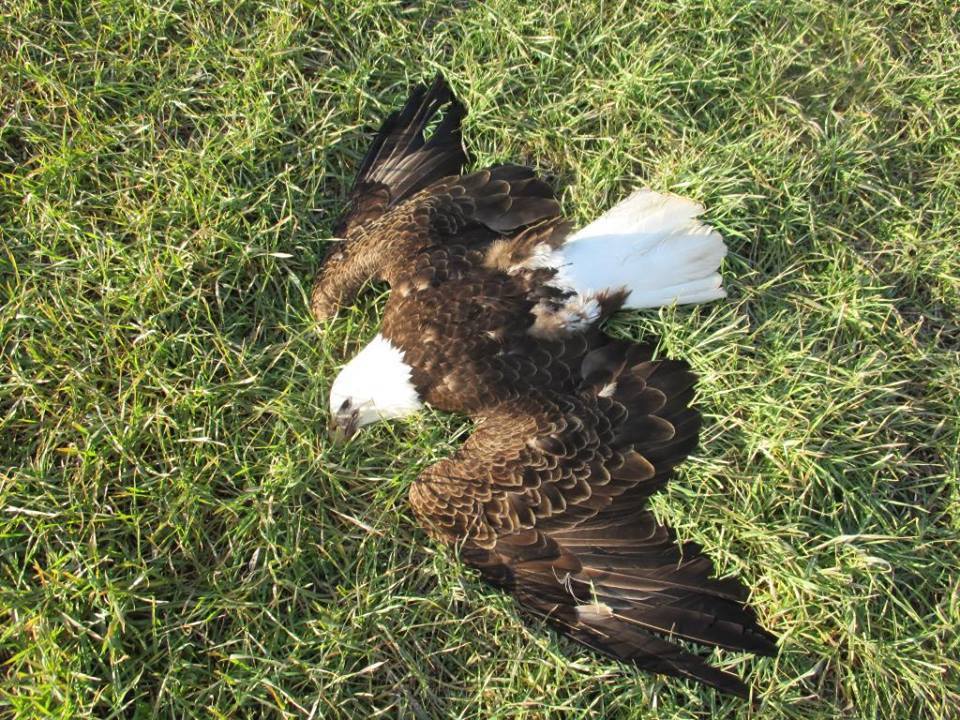
Here's What Killed 13 Bald Eagles ... and Their Raccoon Dinner

Wildlife experts have partially solved a murder mystery regarding the deaths of 13 bald eagles, but they still don't know who did it.
The 13 eagles — including some so young, they hadn't yet grown their iconic white head feathers — were poisoned with a deadly pesticide known as carbofuran, according to a six-month investigation first reported by Maryland radio station WNAV.
Carbofuran is highly toxic — just one granule of it can kill a small bird, according to the Cornell Lab of Ornithology. The Environmental Protection Agency (EPA) banned the use of liquid carbofuran in food crops in 2009, but many people still likely have aging containers of the pesticide in their sheds, Karyn Bischoff, a toxicologist at Cornell University's Animal Health Diagnostic Center, told The Washington Post. [Photos: Bald Eagles of the Mighty Mississippi]
The 13 dead bald eagles (Haliaeetus leucocephalus) were first discovered by a man looking for deer antlers on Maryland's eastern shore in February 2016. After finding four of the dead birds, the man called the Maryland Natural Resources Police, who later found nine more when they came out to investigate the site in Federalsburg, The Washington Post reported.
The bald eagle is a federally protected bird, and the U.S. Fish and Wildlife Service spent the following six months investigating the birds' deaths, interviewing more than a dozen landowners and property managers near the scene of the crime. But "there was no smoking gun," John LaCorte, a special agent with the Fish and Wildlife Service, told The Washington Post. "It's very frustrating."
Carbofuran once killed up to 2 million birds each year, according to the EPA. The pellet form of the pesticide, which looks like grain seeds, was banned in the mid-1990s, when bald eagles were still on the endangered species list.
Even though it's banned, farmers appear to be using the pesticide as a way to kill animals that eat plants (such as illegally grown marijuana) and livestock, The Washington Post reported. When these animals eat it, "it's a pretty ugly way to die," Bischoff told The Washington Post. If ingested or inhaled, it can cause muscle cramps, excessive salivation, dizziness, vomiting, labored breathing and even unconsciousness, according to the Centers for Disease Control and Prevention. It can also prompt the glands in the lungs to secrete fluids, so that exposed animals "drown in their own fluids," Bischoff said.
Sign up for the Live Science daily newsletter now
Get the world’s most fascinating discoveries delivered straight to your inbox.
As a part of the investigation, the Fish and Wildlife Service did necropsies (animal autopsies) on six of the 13 eagles, as well as a dead raccoon (Procyon lotor) found nearby. All six birds had carbofuran in their stomachs or crops, and the raccoon tested positive as well.
It's possible that one of the bald eagles picked up the raccoon elsewhere and carried it to the farm in Federalsburg, where the other birds dined on the deadly meal, LaCorte told The Washington Post.
Bald eagles are protected under the Bald and Golden Eagle Protection Act and the Migratory Bird Treaty Act. People convicted of killing even one bald eagle are subject to up to two years in prison and a fine of $250,000.
Original article on Live Science.

Laura is the archaeology and Life's Little Mysteries editor at Live Science. She also reports on general science, including paleontology. Her work has appeared in The New York Times, Scholastic, Popular Science and Spectrum, a site on autism research. She has won multiple awards from the Society of Professional Journalists and the Washington Newspaper Publishers Association for her reporting at a weekly newspaper near Seattle. Laura holds a bachelor's degree in English literature and psychology from Washington University in St. Louis and a master's degree in science writing from NYU.









